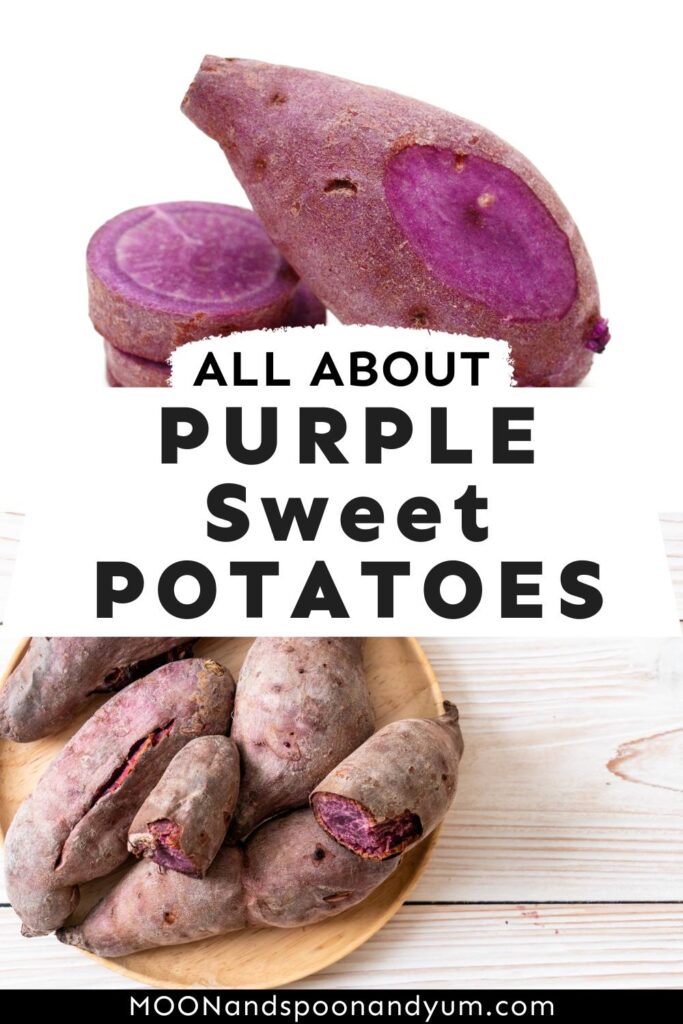All About Purple Sweet Potatoes
Discover the nutritional benefits and culinary versatility of purple sweet potatoes in our special guide. Learn about their antioxidant properties, cooking tips, delicious recipe ideas, and more!

Purple sweet potatoes are a type of root vegetable that has become increasingly popular in recent years due to their unique color and nutritional benefits. These potatoes are not only delicious but also packed with nutrients, making them a great addition to any healthy diet.
One of the key benefits of purple sweet potatoes is their high content of vitamin C and vitamin A, both of which are essential for maintaining a healthy immune system and promoting good vision. In addition to these vitamins, purple sweet potatoes are also rich in antioxidants, which can help to protect the body from damage caused by free radicals.
Overall, purple sweet potatoes are a great choice for anyone looking to improve their health and increase their intake of essential vitamins and minerals. Whether you enjoy them baked, mashed, or roasted these colorful and flavorful vegetables are sure to become a staple in your diet.
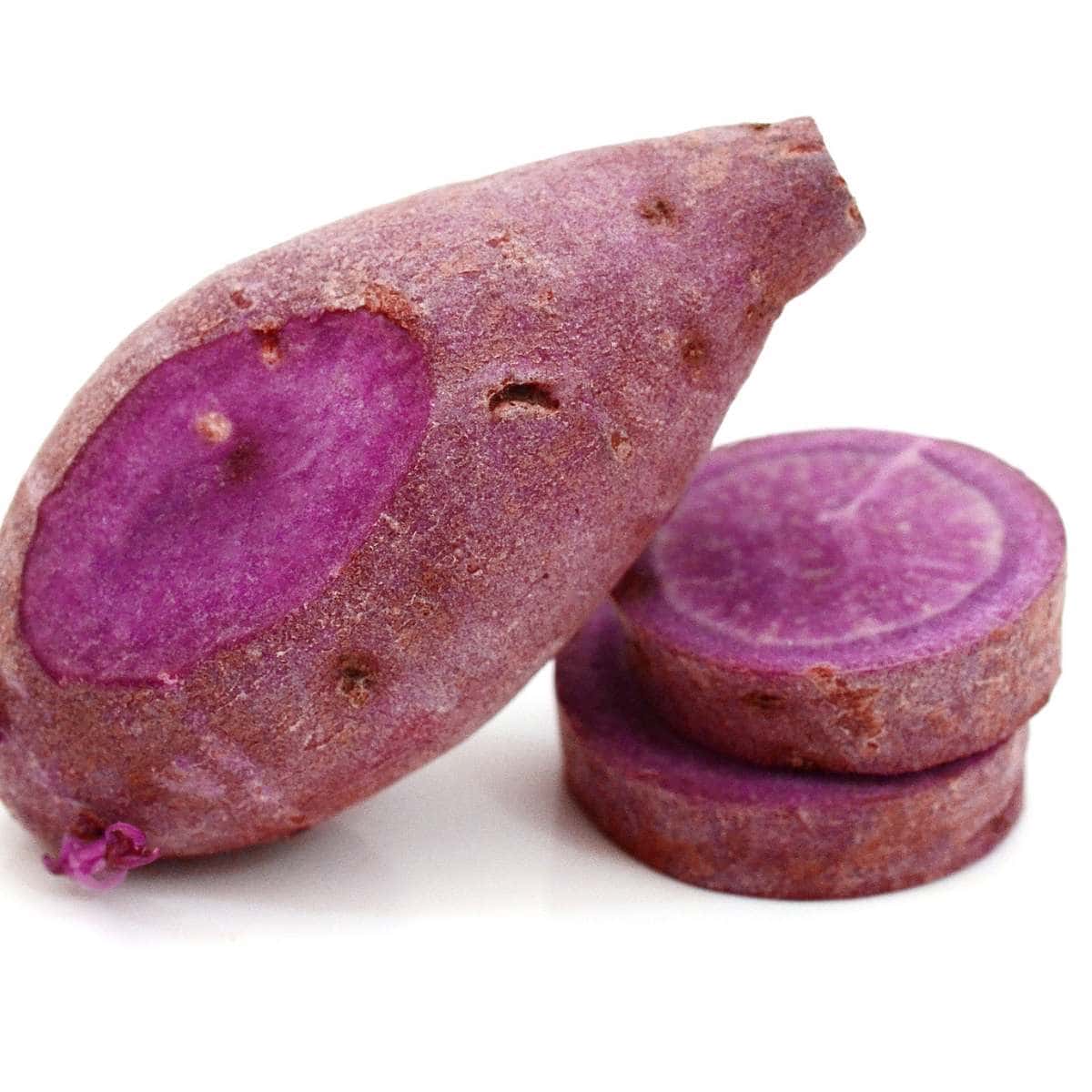
Purple Sweet Potato Origins
Purple sweet potatoes have been around for centuries and have a rich history. The Okinawan sweet potato is believed to have originated in the Americas and was brought to Japan in the early 1600s. It was then introduced to Hawaii in the early 1900s, where it became a popular staple food.
The Stokes Purple® sweet potato, on the other hand, hails from North Carolina. It was first discovered by a sweet potato farmer named Mike Sizemore, who received some purple-colored potatoes as a gift from an unidentified woman. He liked them so much that he began to cultivate them, eventually obtaining a patent and launching them in the commercial market.
Purple sweet potatoes are a member of the Ipomoea genus, just like other sweet potatoes. There are two main varieties of purple sweet potatoes: the Okinawa (white skin) and Stokes (purple skin). Both varieties have a deep purple flesh, which is what gives them their unique color.
In addition to their vibrant color, purple sweet potatoes are also known for their nutritional benefits. They are high in antioxidants, which can help protect the body against damage from free radicals. They are also a good source of fiber, vitamins, and minerals.
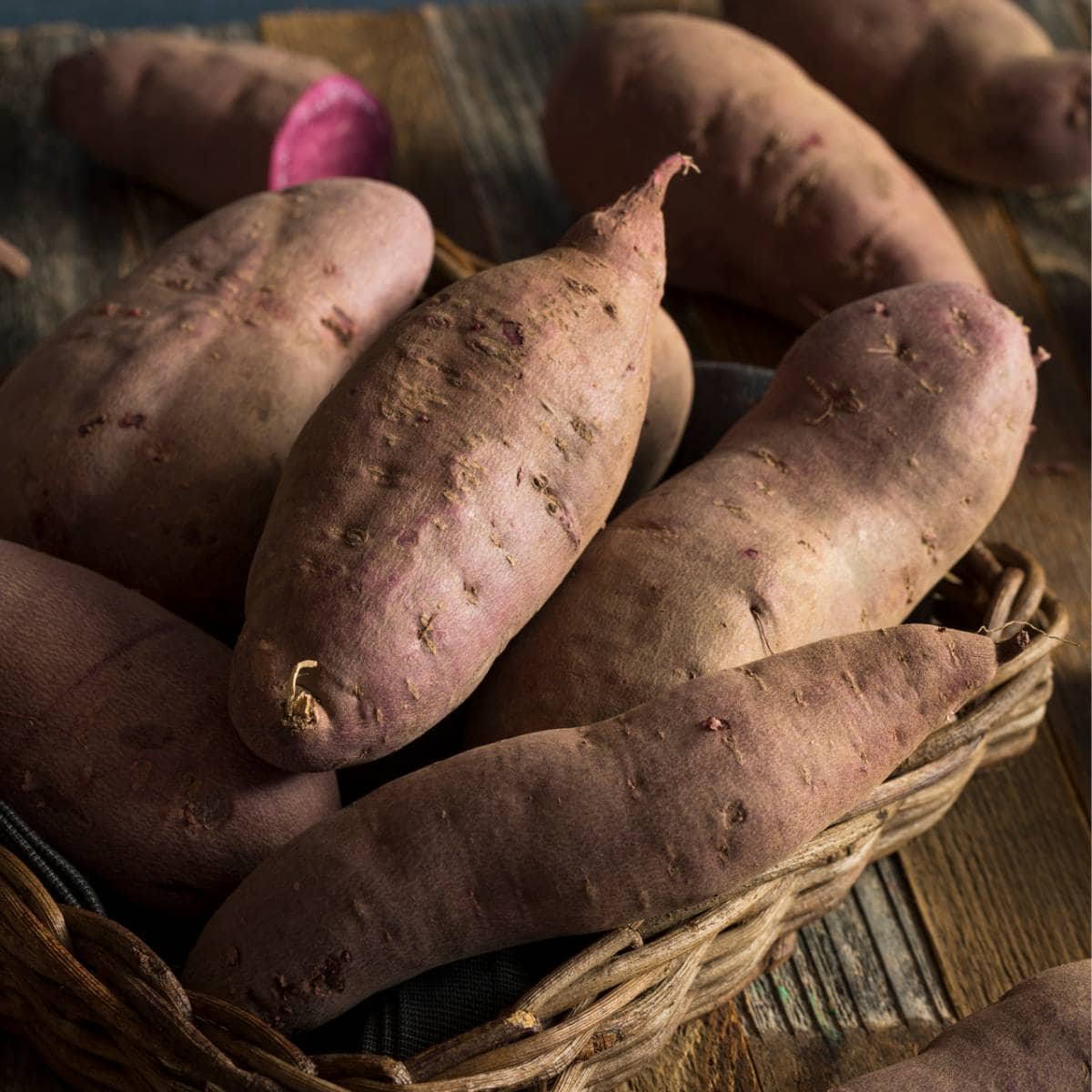
Nutritional Profile and Health Benefits
Purple sweet potatoes are an excellent source of dietary fiber, potassium, iron, and vitamin B6. Let’s explore the nutritional profile and health benefits of purple sweet potatoes in detail.
Vitamins and Minerals
One medium-sized purple sweet potato contains approximately 120 calories, 2 grams of protein, 28 grams of carbohydrates, 4 grams of fiber, and 0 grams of fat. They are also an excellent source of potassium, which is essential for maintaining healthy blood pressure levels and heart health. Additionally, they contain iron, which is necessary for the production of red blood cells and the prevention of anemia.
Anthocyanins and Antioxidant Properties
Purple sweet potatoes contain high levels of anthocyanins, which are pigments that give them their distinctive purple color. These anthocyanins have potent antioxidant properties that help to protect the body against oxidative stress and inflammation. Antioxidants are essential for maintaining good health and reducing the risk of chronic diseases such as cancer, heart disease, and diabetes.
Dietary Fiber and Digestive Health
Purple sweet potatoes are also an excellent source of dietary fiber, which is essential for maintaining good digestive health. Fiber helps to promote regular bowel movements, prevent constipation, and reduce the risk of colon cancer. It also helps to regulate blood sugar levels, which can be beneficial for people with diabetes. Additionally, fiber can help to promote feelings of fullness and reduce calorie intake, which can be helpful for weight loss.
In summary, purple sweet potatoes are a nutrient-dense root vegetable that provides numerous benefits. Regular consumption of purple sweet potatoes may help to promote good health and reduce the risk of chronic diseases.
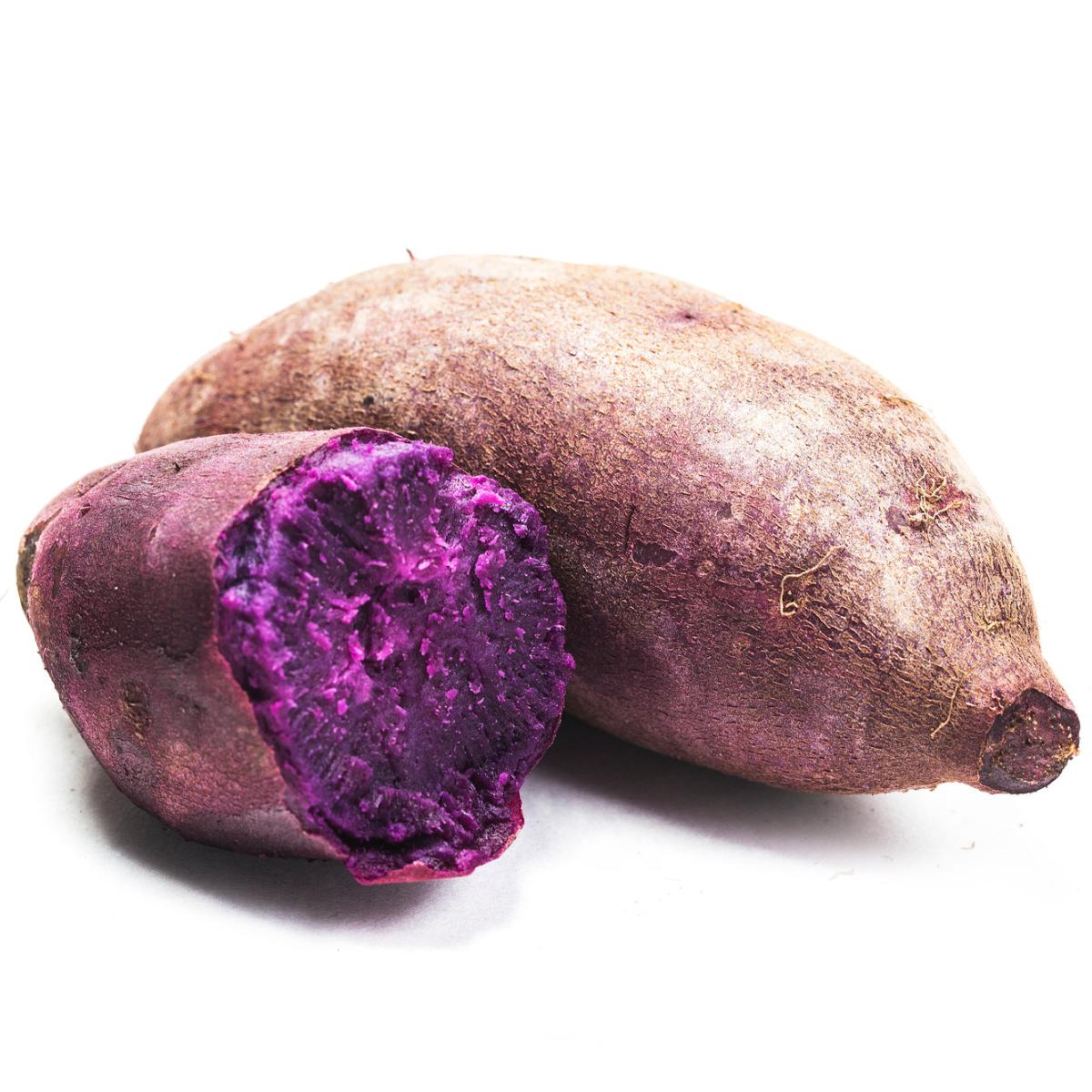
Culinary Uses and Recipes
What Do Purple Sweet Potatoes Taste Like?
Purple sweet potatoes have a mildly sweet flavor and a starchy texture. They are slightly less sweet than orange sweet potatoes, but their flavor is still enjoyable. The purple flesh is also denser and less moist than orange sweet potatoes.
Baking and Cooking Techniques
Purple sweet potatoes can be baked, steamed, roasted, microwaved, air-fried, and boiled. When baking or roasting, it is best to wrap them in foil to prevent them from drying out. Steaming is the best way to preserve their color and texture.
When cooking with purple sweet potatoes, it is important to note that they take longer to cook than regular sweet potatoes.
Incorporating into Meals
Purple sweet potatoes can be used in both sweet and savory dishes. They can be mashed, roasted, or boiled and used as a side dish. They can also be used as an ingredient in soups, stews, and curries.
Popular Recipes
One popular recipe is crispy baked purple sweet potato fries. These fries make a savory and delicious snack.
One deliciously indulgent use would be creamy mashed purple sweet potatoes whose vibrant eye-catching hue is always a winner on the dinner table.
Purple sweet potatoes are a versatile ingredient that can be used in a variety of recipes. The unique color and flavor of purple sweet potatoes will add a special touch to any dish!
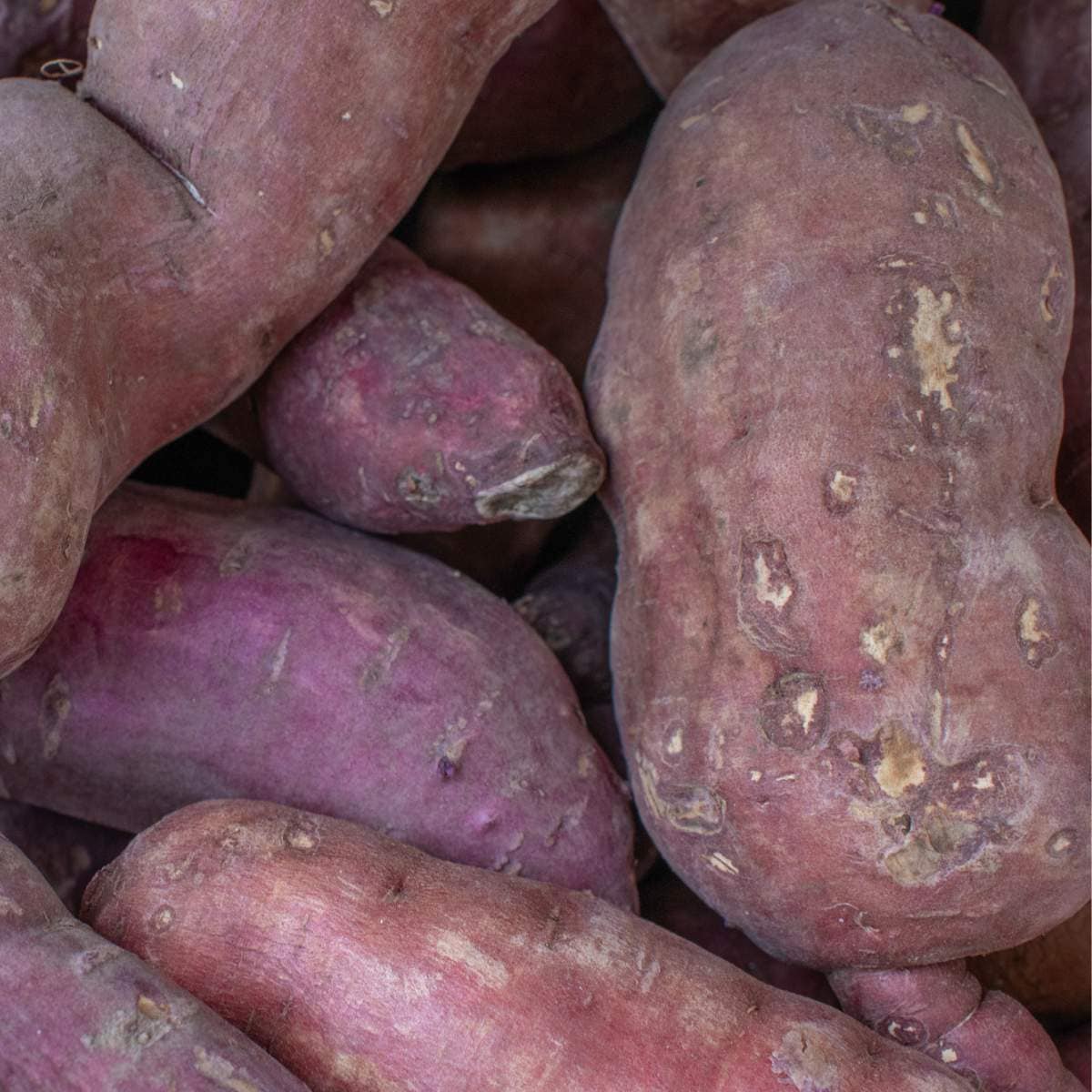
Cultural and Regional Varieties
Okinawan Sweet Potatoes in Japan
Okinawan sweet potatoes, also known as Japanese sweet potatoes, are a popular variety of sweet potatoes in Japan. They are known for their purple skin and white flesh, which turns yellow when cooked. These sweet potatoes are a staple in Okinawan cuisine and are often used in dishes such as tempura, nimono (simmered dishes), and imo-jochu (sweet potato shochu).
Hawaiian and North American Varieties
Hawaiian sweet potatoes, also known as purple sweet potatoes or ‘uala, are a beloved staple in Hawaiian cuisine. They are typically smaller and more round than other sweet potato varieties and have purple skin and flesh.
In North America, the Stokes Purple® sweet potato is a popular variety that was developed in North Carolina. This sweet potato has a deep purple skin and flesh and is known for its sweet flavor and moist texture.
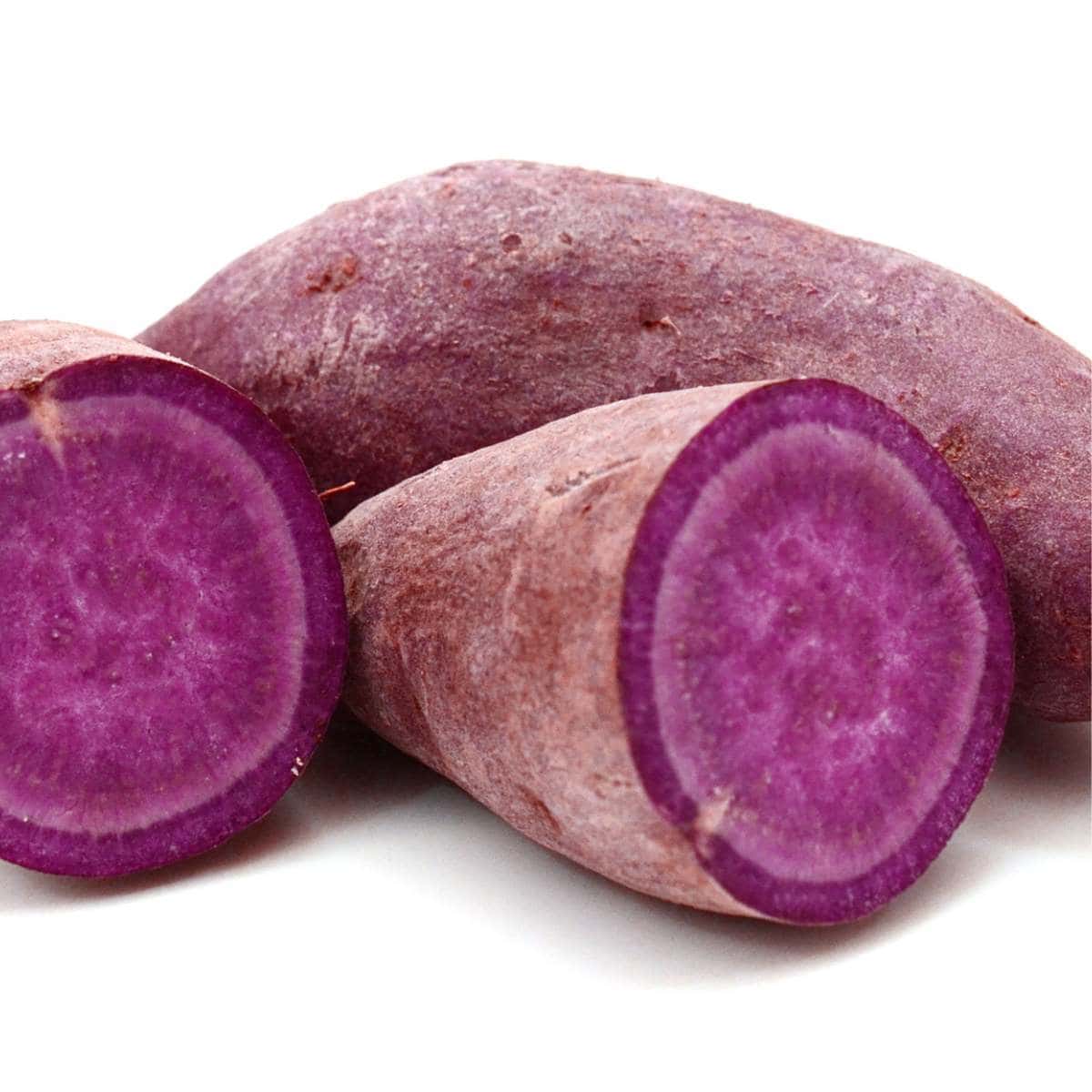
Purchasing and Storage Tips
Selecting Quality Sweet Potatoes
When purchasing purple sweet potatoes, it is important to select firm ones that are free of cracks, bruises, or soft spots. The skin should be smooth and free of blemishes. Purple sweet potatoes can be found in most grocery stores, usually in the produce section. When selecting sweet potatoes, it is important to choose ones that are uniform in size so that they cook evenly.
Storage and Shelf Life
To extend the shelf life of purple sweet potatoes, it is important to store them properly. The potatoes should be stored in a cool, dry place, such as a pantry or a kitchen cabinet. The ideal temperature for storing sweet potatoes is between 55-60°F. If stored properly, raw sweet potatoes can last for up to a month.
It is important to note that purple sweet potatoes have a shorter storage lifespan than regular potatoes, so it is best to use them within a week or two of purchase. To ensure that they stay fresh, do not wash the potatoes before storing them, as excess moisture can cause them to spoil more quickly. Instead, store them in a breathable container, such as a basket or a paper bag.

